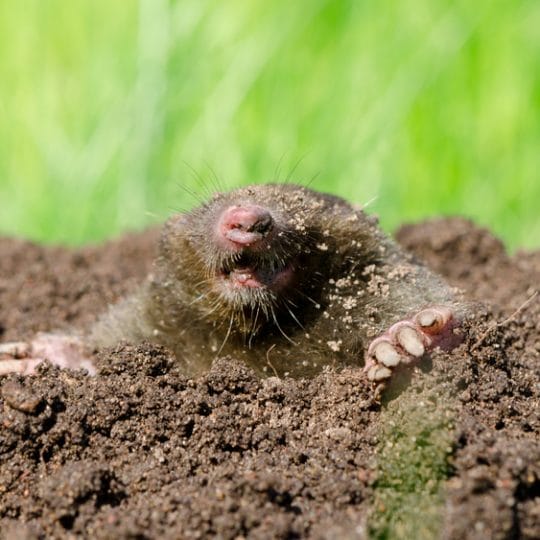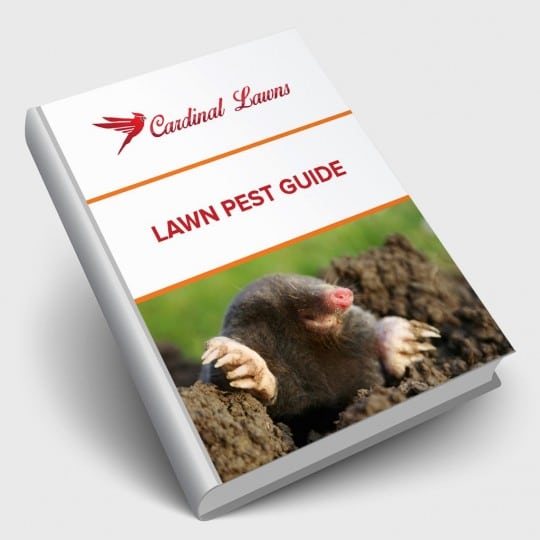How to Protect Your Yard From Mole Damage
Posted
October 20, 2016

If you’ve ever had your lawn overrun with mole tunnels, you know it’s not cute. Although moles can be a gardener’s friend, with their natural aeration techniques and hearty appetite for insect larvae, they can wreak havoc too. For example, molehills disturb plant roots, make walking and mowing difficult, and damage grass. In addition, while moles themselves do not eat plants, their ever-expanding tunnels can be hijacked by voles, tiny rodents that do eat plants. So when you want to control moles and prevent moles from setting up residence in and under your lawn, follow our 5 tips:
1. Create a vertical barrier to prevent moles:
If you have a mole and a vegetable garden, you run the risk of voles using the mole tunnels as a quick route to eat your crops. So create a barrier by digging a trench two to three feet deep around the perimeter. Next, fill it with rocks, or use a wire mesh. Be sure that any wire barrier extends two feet into the dirt and 6 to 12 inches above ground.
Keep in mind that this method works well, but it is certainly not an easy job for anything but the smallest of gardens. You can also protect individual bulbs in the ground by building small wire cages around them. Again, an arduous task, but if these plants are particularly important to you, the effort might be worth it.
2. Add predators:
One of the mole’s biggest predators is the owl. So install an owl nesting box on your property in late winter or early spring, when owls begin to look for nests. This way, any owl that comes to stay will help control the mole and small rodent population. Or if you have a cat and don’t mind letting it roam your property, he may enjoy the sport of mole hunting.
3. Remove their food source to prevent moles:
Moles love to eat grubs. Eliminate the grubs, and you’ll not only repel moles, but you will help out your lawn and landscape as well.
4. Buzz them off:
Ultrasonic devices produce intermittent pulses that are intended to annoy moles. The buzzing can make them think that there is another mole digging away in the same territory. Sometimes these devices work to discourage moles. But sometimes the mole will just get used to the sound and keep right on digging.
5. Repulse them with castor oil:
Humans and moles alike will turn up their noses and run the other way from castor oil. Home and garden stores sell castor oil-based pest repellents in liquid and granular forms. They dissolve into the soil and release a scent that drives away moles, voles and gophers. To use them, apply to the soil wherever tunnels or cone-shaped mounds appear, then water with a hose or wait for it to rain. The castor oil won’t kill the varmints; it’ll just send them scampering away. You may need to reapply. Check the back of the package for detailed instructions.
If all else fails, and you need expert assistance with your pest problem, contact Cardinal Lawns at 614-808-4446 for a free consultation. We will help you send moles scurrying and get your landscape looking beautiful again.

Download Your FREE Lawn Pest Guide
Pests become most prevalent during the heat and humidity of summer. Take some time to learn about the signs of infestations before any damage can be caused to your landscape. This handy guide will teach you how to spot common lawn pests and how to keep them from causing harm to you and your property.